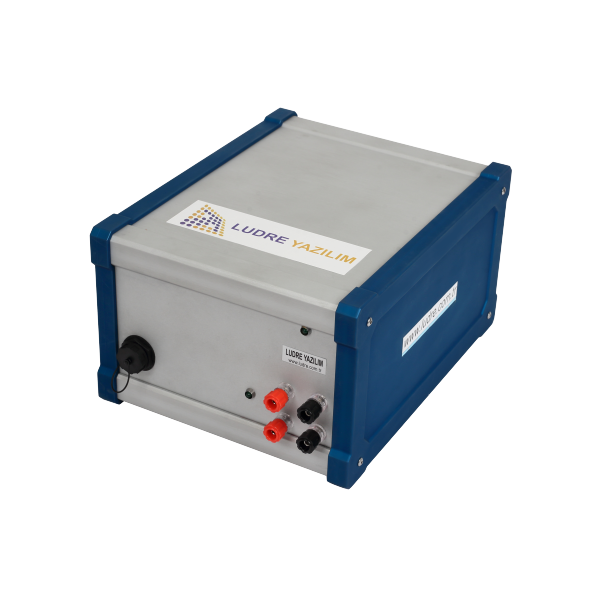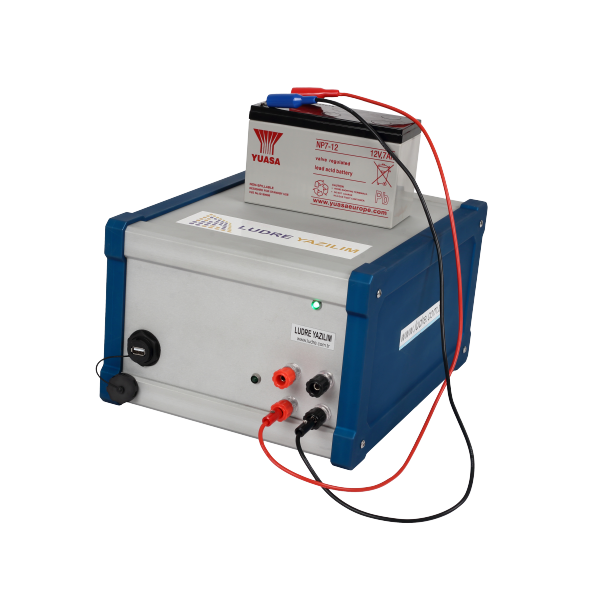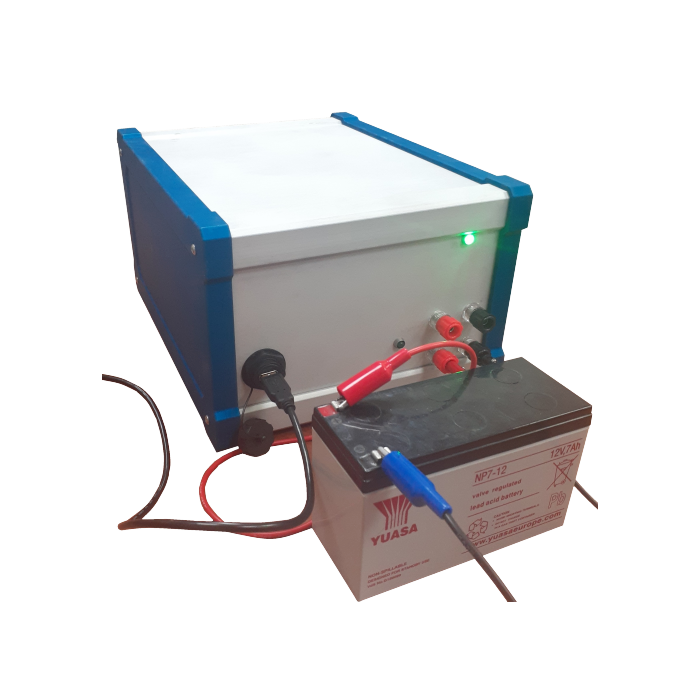TEST SİSTEMLERİ
Battery Management Systems (BMS)

Battery Management System
Programmable Battery Charge/Discharge
Advanced Battery Parameter Setting
Contents
Battery Tester
Computer Communication Cable
Power Connection Cable
Computer Software
Length 33cm
Width 25cm
Height 17.5cm
DESCRIPTION
Example Applications
1. Road Simulation
.png)
2. Lead Battery Charger
.png)
3. Constant Current Discharge
.png)
4. Fixed Resistance Discharge
.png)
5. Constant Power Discharge
.png)
You can create your own tests with the parameters you write to any excel file. You can run the software according to these parameters.
Air Cooled System is available. It converts the energy taken from the battery into heat. The heat is thrown out by the air cooling system. Behind it, there is a fan system that works depending on the temperature.
Our Battery Test System product has just been released. You can take advantage of our promotional prices.
What is Battery Management Systems (BMS)?
Battery Cell Charge/Discharge Test System
What is Nyquis Impedance Analysis?
RANGE OF APPLICATION
Electric Vehicles
Electric Scooter/Bike
Power Tools
Academic Studies
Protection of Cells
Temperature Control Management
Charge/Discharge Control
Data Collecting
Communication with Modules
Data Storage Storage
Cell Balance Control
Battery Discharge Test
Resistance Impedance Testing and Analysis
Detection and Examination of System Parameters
Battery Status Parameters
Charge and Health Status of Batteries
Validation and Development Tests
Uninterruptible Power Supplies (UPS)
Battery Life Cycle
Battery Analysis
Battery Management
Energy Storage Systems EDS
Sustainability
Battery Test System Usage Areas
1) Energy Storage Systems
• Secondary (rechargeable) batteries included in battery technology, fast response times, high energy capacities and high storage efficiencies. Therefore, they are useful in stationary storage systems.
2) Electric Vehicle
• It is expected that the use of electric driven vehicles will become widespread due to the high amount of carbon dioxide emissions from vehicles using internal combustion engines and the legal restrictions on this issue. In this regard, for the purpose of energy storage Batteries are of interest. The use of lithium-ion polymer type battery cells is increasing due to its high power and energy density in both renewable energy systems and electric vehicles. The battery pack for electric vehicles requires the battery cells to be in parallel for large current use. An important parameter is the impedance consistency of the battery cell, as the battery life will be affected if the impedance is not consistent.
3) Autonomous Systems
• T.C. Project on autonomous systems of the Presidency of the Undersecretariat of Defense Industry organizes calls and competitions. Unmanned/Autonomous Land Vehicles (UAV), Unmanned Underwater In addition to organizing Vehicles Prototype Competitions, project calls related to robotic systems are also carried out. is done. In this direction, our company aims to support these projects with the system it will produce locally. Aims.
4) Hybrid Systems
• Key to electric vehicle (EV), hybrid electric vehicle (HEV) and their development With the development of batteries, the demand for battery chargers will increase. it is inevitable. In these vehicles, the main energy source or the first order auxiliary energy The performances of high energy density batteries used as a source of does not depend on the design of the battery cells. How cells are used and it also depends on charging. Therefore, in the use and development of EV and HEV battery chargers play a critical role. Battery cells are inefficient, should not be charged with chargers that reduce its performance and lifespan. The performance of the battery is increased by applying test systems, R&D studies and scenario tests.
Autonomous Vehicles and the World
USA: 33 States have autonomous vehicles on public roads.
Sweden: Volvo launched the Drive Me project, which brings autonomous vehicles to many people.
UK: The government has passed a bill to draft liability and insurance policies regarding autonomous vehicles.
China: Shanghai issues its first autonomous vehicle driving licenses.
South Korea: K-City is the largest city built for autonomous car testing.
California: DMV allows driverless, fully autonomous vehicles to run on public roads.
Singapore: Passed legislation recognizing that motor vehicles do not require human drivers.
New Zealand: The country has no special legal requirements for drivers to be on board.
Germany: Parliament passed a law last May allowing companies to test their autonomous cars on public roads.
Arizona: Governor Ducey gives the green light for self-driving cars to run on public roads.
Netherlands: The Council of Ministers approved the driverless car road test for the first time in 2015.
Frequently Asked Questions
1. Can a battery life test be done?
Yes. It can be done.
2. Is it possible to process multi-channel?
The first product was produced as a single module. However, it will be produced in modules of 4 according to the need. Multi-channel testing can be done.
3. Does it show the charge rate of the battery?
It shows the amount of power added or removed (charge or discharge) in the battery so far in a time dependent graph. The value read from the graph is also displayed on the interface.
4. Can we monitor energy consumption periodically?
There is no time limit for the tests you do. For a 20-hour test, you can record all the parameters of the battery over time. You can review them retrospectively.



